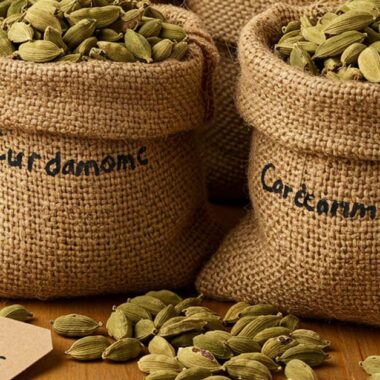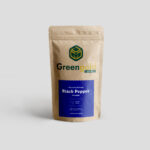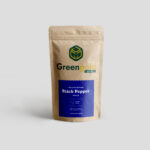Cardamom, the Queen of Spices, is cultivated using both organic and conventional farming methods. While both approaches aim to produce high-quality cardamom, they differ in farming techniques, environmental impact, and final product quality. 🌱🏡
Let’s compare organic and conventional cardamom farming to help you understand their differences and benefits! 💚
🌾 1. Farming Techniques: Natural vs. Chemical-Based
✅ Organic Cardamom Farming
🔹 Uses natural compost, cow dung, and bio-fertilizers.
🔹 Relies on crop rotation, mulching, and organic pest control.
🔹 Promotes soil fertility and biodiversity.
❌ Conventional Cardamom Farming
🔹 Uses synthetic fertilizers and chemical pesticides to boost yield.
🔹 Focuses on higher productivity but may affect soil health.
🔹 More dependent on external inputs for pest and disease control.
💡 Organic farming enhances soil fertility naturally! 🌿✨
🦠 2. Pesticide & Chemical Usage
✅ Organic Cardamom Farming
🔹 Uses neem oil, herbal extracts, and beneficial insects for pest control.
🔹 Avoids toxic pesticides, making it safer for the environment and consumers.
🔹 Less chemical residue, ensuring a pure and natural product.
❌ Conventional Cardamom Farming
🔹 Uses chemical pesticides and fungicides to protect crops from diseases.
🔹 Higher risk of chemical residues on the final product.
🔹 Long-term chemical use can degrade soil quality.
💡 Organic cardamom is free from harmful chemicals! 🚫🧪
🌎 3. Environmental Impact: Sustainability vs. High Inputs
✅ Organic Cardamom Farming
🔹 Eco-friendly, supports biodiversity, and maintains natural soil health.
🔹 Reduces water pollution from chemical runoff.
🔹 Promotes carbon sequestration, fighting climate change.
❌ Conventional Cardamom Farming
🔹 Can lead to soil degradation and loss of beneficial microorganisms.
🔹 Uses more chemical inputs, affecting local ecosystems.
🔹 Higher water consumption due to chemical-based irrigation needs.
💡 Organic farming is a sustainable choice for the future! 🌱🌍
🍃 4. Flavor & Aroma: Natural vs. Artificially Enhanced
✅ Organic Cardamom
🔹 Grows naturally, allowing essential oils to develop fully.
🔹 Offers richer aroma, stronger flavor, and better medicinal properties.
🔹 Free from chemical aftertaste.
❌ Conventional Cardamom
🔹 May grow faster due to chemical inputs but can lack depth in flavor.
🔹 Some chemical residues can alter natural taste and scent.
🔹 Mass production may reduce essential oil content.
💡 Organic cardamom has a more authentic, bold aroma! 🌿🔥
💰 5. Cost & Availability: Premium vs. Mass-Produced
✅ Organic Cardamom
🔹 Takes longer to cultivate but produces higher-quality cardamom.
🔹 More expensive due to labor-intensive methods and certification costs.
🔹 Limited availability but worth the investment for purity.
❌ Conventional Cardamom
🔹 Easier to find and generally cheaper.
🔹 Higher yields lead to lower prices.
🔹 Mass production can compromise quality over time.
💡 Organic cardamom is a premium choice for those seeking purity! 🏆🌱
🏆 Which One Should You Choose?
If you value purity, sustainability, and rich flavor, organic cardamom is the best choice! ✅ However, conventional cardamom remains a more affordable option for bulk production.
💚 For the finest, chemical-free cardamom, choose hand-picked, organically grown Idukki cardamom!
👉 Shop Now 🛍️🌿
🌟 Conclusion
Both organic and conventional cardamom farming have their pros and cons. While conventional farming focuses on high yields, organic farming ensures sustainability, better soil health, and superior quality. 🌱✨












